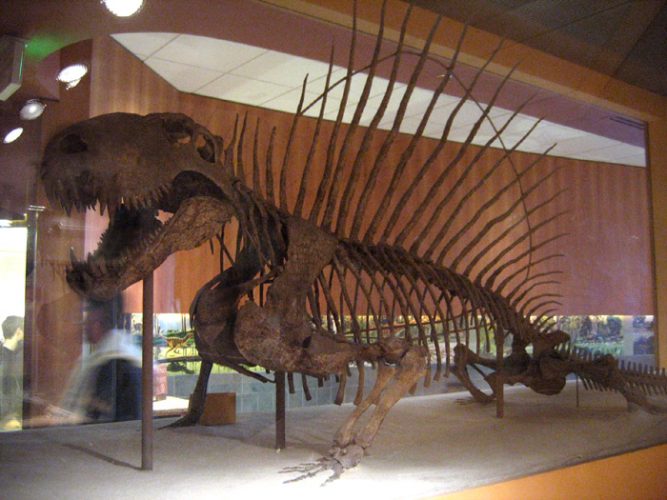Synapsids

Synapsids (Greek, ‘fused arch’), synonymous with theropsids (Greek, ‘beast-face’), are a group of animals that includes mammals and every animal more closely related to mammals than to other living amniotes. They are easily separated from other amniotes by having a temporal fenestra, an opening low in the skull roof behind each eye, leaving a bony arch beneath each; this accounts for their name. Primitive synapsids are usually called pelycosaurs or pelycosaur-grade synapsids; more advanced mammal-like ones, therapsids. The non-mammalian members are described as mammal-like reptiles in classical systematics; they can also be called stem mammals or proto-mammals. Synapsids evolved from basal amniotes and are one of the two major groups of the later amniotes; the other is the sauropsids, a group that includes modern reptiles and birds. The distinctive temporal fenestra developed in the ancestral synapsid about 312 million years ago, during the Late Carboniferous period.
Synapsids were the largest terrestrial vertebrates in the Permian period, 299 to 251 million years ago, although some of the larger pareiasaurs at the end of Permian could match them in size. As with other groups then extant, their numbers and variety were severely reduced by the Permian–Triassic extinction. By the time of the extinction at the end of Permian, all the older forms of synapsids (known as pelycosaurs) were already gone, having been replaced by the more advanced therapsids. Though the dicynodonts and Eutheriodontia, the latter consisting of Eutherocephalia (Therocephalia) and Epicynodontia (Cynodontia), continued into the Triassic period as the only known surviving therapsids, archosaurs became the largest and most numerous land vertebrates in the course of this period. The cynodont group Probainognathia, which includes Mammaliaformes, were the only synapsids who outlasted the Triassic. After the Cretaceous–Paleogene extinction event, the synapsids (in the form of mammals) again became the largest land animals.

Synapsids as a reptilian subclass
Synapsids were originally defined at the turn of the 20th century as one of the four main subclasses of reptiles, on the basis of their distinctive temporal openings. These openings in the cheek bones allowed the attachment of larger jaw muscles, hence a more efficient bite. Synapsids were considered to be the reptilian lineage that led to mammals; they gradually evolved increasingly mammalian features, hence the name “mammal-like reptiles”, which became a broad, traditional description for all Paleozoic synapsids.
The “mammal-like reptiles”
The traditional classification of synapsids as reptiles is continued by some palaeontologists (Colbert & Morales 2001). In the 1990s, this approach was complemented by a cladistic one, according to which the only valid groups are those that include common ancestors and all of their descendants: these are known as monophyletic groups, or clades.
Phylogenetically, synapsids are the entire synapsid/mammal branch of the tree of life, though in practice the term is most often used when referring to the reptile-grade synapsids. The term “mammal-like reptiles” represents a paraphyletic grade, but is commonly used both colloquially and in the technical literature to refer to all non-mammalian synapsids. The actual monophyly of Synapsida is not in doubt, however, and the expressions “Synapsida contains the mammals” and “synapsids gave rise to the mammals” both express the same phylogenetic hypothesis.
Primitive and advanced synapsids
The synapsids are traditionally divided into a primitive group and an advanced group, known respectively as pelycosaurs and therapsids. ‘Pelycosaurs’ make up the six most primitive families of synapsids. They were all rather lizard-like, with sprawling gait and possibly horny scutes. The therapsids contain the more advanced synapsids, having a more erect pose and possibly hair, at least in some forms. In traditional taxonomy, the Synapsida encompasses two distinct grades successively closer to mammals: the low-slung pelycosaurs have given rise to the more erect therapsids, who in their turn have given rise to the mammals. In traditional vertebrate classification, the Pelycosauria and Therapsida were both considered orders of the subclass Synapsida.
In phylogenetic nomenclature, the terms are used somewhat differently, as the daughter clades are included. Most papers published during the 21st century have treated “Pelycosauria” as an informal grouping of primitive members. Therapsida has remained in use as a clade containing both the traditional therapsid families and mammals. However, in practical usage, the terms are used almost exclusively when referring to the more basal members that lie outside of Mammaliaformes.









